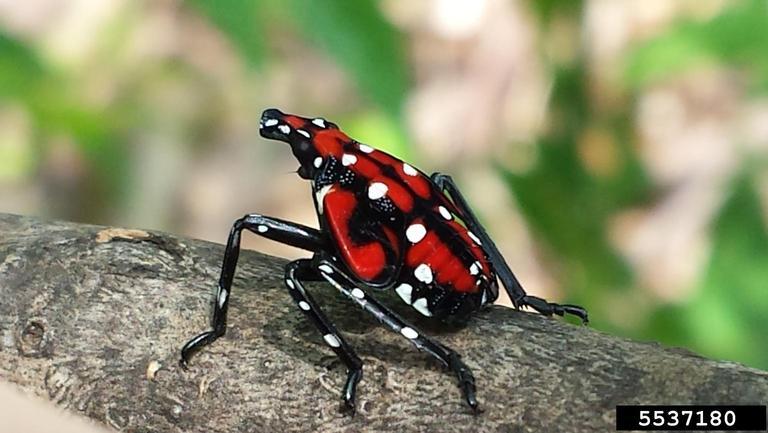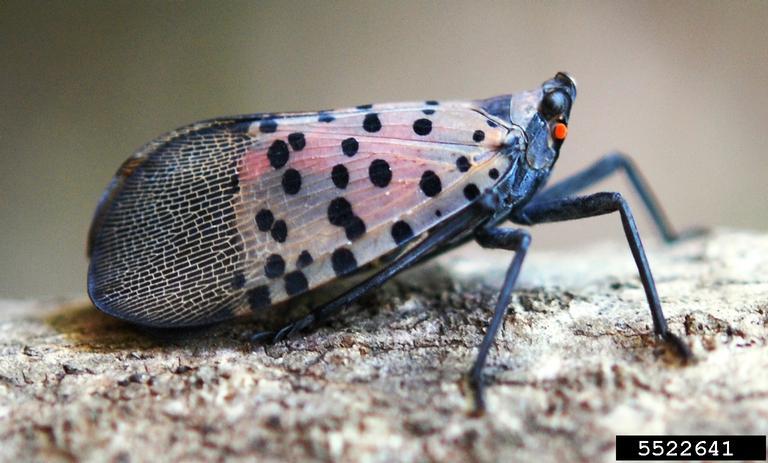
Caption
Juvenile spotted lanternflies, or nymphs, are black with white spots and turn red as they develop.
Credit: Photos by Lawrence Barringer, Pennsylvania Department of Agriculture, Bugwood.org

Juvenile spotted lanternflies, or nymphs, are black with white spots and turn red as they develop.
On Thursday, Nov. 14, the United States Department of Agriculture confirmed with the Georgia Department of Agriculture the first detection of an invasive plant hopper known to risk Georgia’s agriculture in Fulton County in October.
The spotted lanternfly was first detected in Pennsylvania in 2014 and has since spread to 17 states.
According to GDA, while the spotted lanternfly does not threaten human health, it feeds on various plants, including grapes, hops, stone fruits and hardwood trees.

A spotted lanternfly egg mass is seen on a tree.
“Its feeding weakens these plants and produces a sticky, sugary fluid that encourages the growth of sooty mold, further harming crops,” the GDA reports.
The agency says that spotted lanternflies' sizes depend on their life stage. Nymphs (juvenile spotted lanternflies) are usually 1/4 inch, while adults have a wingspan of 1 inch.

Spotted lanternfly life cycle.
From September to November, spotted lanternflies lay eggs that hatch in the spring as temperatures warm. While adult lantern flies die with the first hard frost of winter, their eggs tend to survive the season.

An adult spotted lanternfly.
“We expect this stage of their life cycle to take place over the coming weeks,” the GDA said.
Georgia Agriculture Commissioner Tyler Harper advises the public on what to do if they encounter a spotted lanternfly.
“The spotted lanternfly, an invasive pest that poses a serious threat to our state’s No. 1 industry, has been detected for the first time in Georgia,” he said. “We urge anyone who sees the spotted lanternfly in their area to document, report and kill it. Controlling the spread of the spotted lanternfly is our best strategy for safeguarding Georgia’s agriculture industry, and we are asking for the public’s help in this effort.”
How to take action if you come across these insects:
GDA offers lists of licensed pesticide contractors and pest control companies for professional treatment.